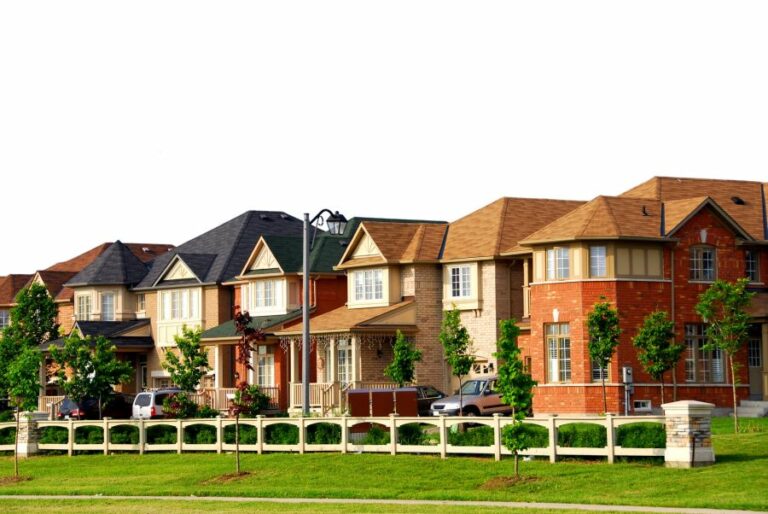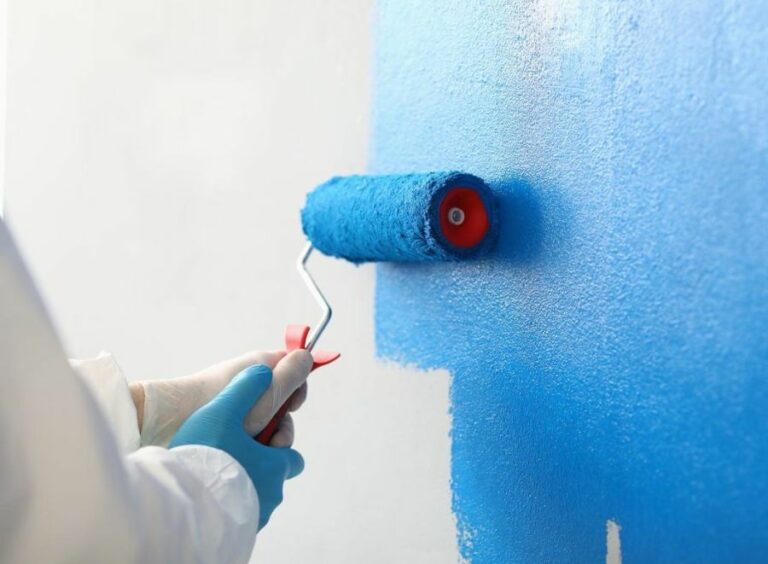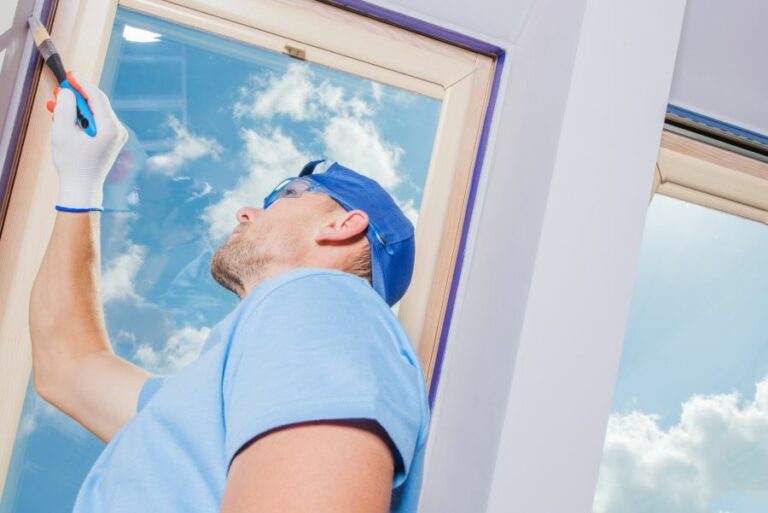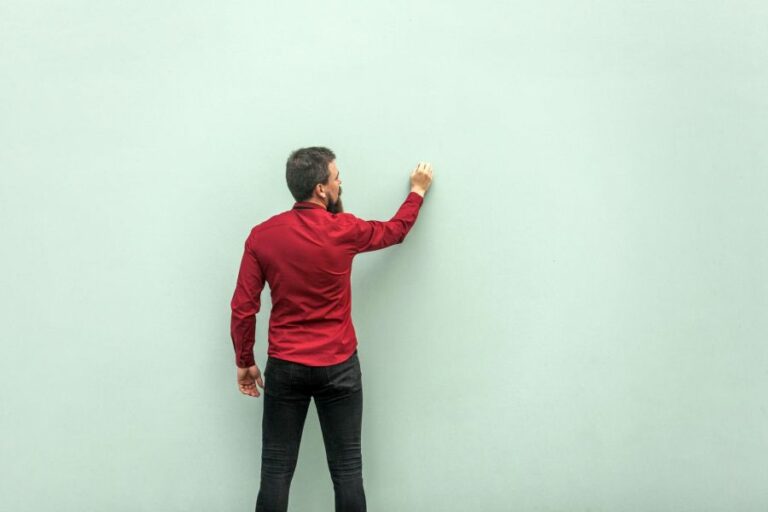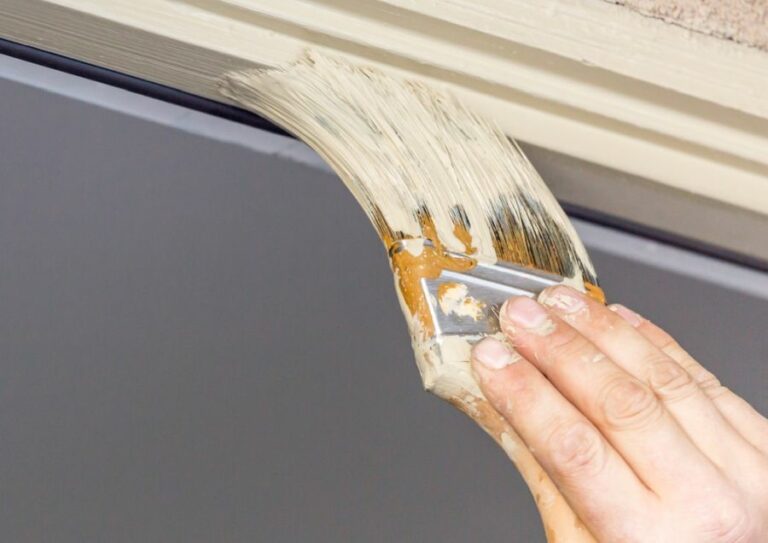Checking Surface Conditions Pre-Process
You’ve come to the right place if you’re looking for guidance on checking surface conditions before starting a process! We understand how crucial it is to make sure the surface is prepared properly to achieve the desired results. Ensuring that the necessary prep work is carried out can save time and money while helping to avoid any unwanted surprises during the process.
Checking surface conditions pre-process:
Surface conditions are crucial for the success of processes like painting, coating, plating, and welding. Ensuring proper surface cleanliness and preparation is essential to achieve high-quality results and prevent failures. Professionals should follow industry standards, choose appropriate cleaning and preparation methods, perform objective measurements, and document the outcomes for optimal results.

Interested in ensuring optimal surface conditions before starting your process? Dive in as we explore the importance of thorough inspection, best practices, and essential tools for assessing surface quality. There’s more to discover. Read on!
Contents
- 1 Examining Surface Conditions Prior to Processing
- 2 Methods for Assessing Surface Preparation
- 3 Inspecting Surface Preparation Before Paint Application
- 3.1 • Step 1: Inspect Surfaces for Defects and Irregularities
- 3.2 • Step 2: Ensure Surfaces Are Clean and Dry
- 3.3 • Step 3: Assess Surface Porosity
- 3.4 • Step 4: Determine the Need for Surface Abrasion
- 3.5 • Step 5: Evaluate the Need for Primer
- 3.6 • Step 6: Perform an Adhesion Test
- 3.7 • Step 7: Follow Paint Manufacturer Recommendations
- 4 Exploring Various Surface Preparation Techniques
- 5 Techniques for Inspecting Surface Finish Quality
Examining Surface Conditions Prior to Processing
Surface conditions play a crucial role in the success of many processes, including painting, coating, plating, and welding. Ensuring proper surface cleanliness and surface preparation is a vital step to achieving high-quality results, maximizing adhesion, and preventing failures.
• Importance of Surface Conditions
The condition of a surface can make or break the performance of final products or structures. A surface that is not adequately cleaned or prepared can negatively impact the adhesion of coatings and paints, which in turn can lead to premature failures, corrosion, and other problems.
In the case of welding or other bonding processes, ensuring proper surface conditions is critical for joint strength and durability. Various industry standards and guidelines are available to help professionals assess surface conditions accurately.
– Cleaning and Degreasing
To remove contaminants from the surface, proper cleaning and degreasing are indispensable steps. Contaminants can include dirt, dust, grease, oil, wax, and rust. They can adversely affect the adhesion of coatings or the performance of bonding processes.
The following methods are commonly used to clean and degrease surfaces:
- Manual cleaning with solvents
- Ultrasonic cleaning
- Vapor degreasing
- Alkaline cleaning
It is essential to choose the right cleaning method to achieve the desired level of cleanliness and to consider the material type and environmental regulations.
After cleaning, it’s best practice to inspect the surface visually and to use surface cleanliness measurement methods such as wipe tests or solvent extract testing.
– Surface Preparation Techniques
Surface preparation is an integral part of the pre-process surface examination. It involves creating an appropriate surface profile or roughness to promote adhesion or other desired characteristics. Typical surface preparation methods include:
- Abrasive blasting (such as sandblasting, grit blasting, or shot blasting)
- Grinding
- Wire brushing
- Chemical treatments (etching or pickling)
- Mechanical treatments (like brushing or machining)
Surface preparation often requires compliance with specific standards and guidelines (e.g., ISO 8501 for steel surfaces or SSPC-SP for concrete surfaces). The method chosen should be suitable for the surface material and the intended process.
• Measuring Surface Conditions
To ensure adequate surface conditions pre-process, it’s necessary to perform objective measurements for various surface properties. This section will cover some of the most important measurement techniques:
– Surface Cleanliness
The cleanliness of a surface is a critical factor affecting the performance of coatings, paints, and bonding processes. There are several methods available to measure surface cleanliness:
- Solvent extract tests (e.g., Bresle test)
- Wipe tests (e.g., ASTM F3125)
- Direct visual inspection and comparison with cleanliness standards (e.g., ISO 8501 or SSPC-VIS)
Besides these methods, new technologies such as optical microscopes or analytical techniques like Fourier Transform Infrared Spectroscopy (FTIR) can provide additional insights on surface cleanliness.
– Surface Profile
The profile or roughness of a surface is essential for adhesion and other characteristics. The following methods are relevant for measuring surface profile:
- Replica tape method (e.g., Testex tape)
- Surface profilometers or roughness testers
- Visual comparison with surface standards (e.g., Rz or Ra scale)
When choosing a surface profile measurement method, the type of surface, process requirements, and industry standards should be considered.
– Surface Inspection for Defects
Checking for surface defects such as cracks, porosity, or inclusions is crucial, especially for processes like welding or plating. Non-destructive testing (NDT) methods can help identify surface defects, and some of the popular NDT techniques include:
- Liquid penetrant inspection (LPI)
- Magnetic particle inspection (MPI)
- Eddy current testing (ECT)
- Ultrasonic testing (UT)
Selecting the right NDT method depends on the material properties, accessibility, and the nature of the defects.
• Final Thoughts and Recommendations
Checking surface conditions pre-processing is essential to ensure high-quality results and prevent failures. Experience shows that investing time in surface inspection can save time, money, and resources in the long run by avoiding potential problems. The following recommendations can help professionals achieve the desired outcomes:
- Understand industry standards and guidelines for surface cleanliness and preparation.
- Choose the appropriate cleaning and surface preparation method based on the material type and process requirements.
- Perform objective measurements of surface cleanliness, surface profile, and defect detection.
- Document the outcomes and take necessary actions based on the findings.
Practicing these recommendations will contribute significantly to the quality and performance of the final products or structures. To learn more about surface conditions and their impacts, visit the National Institute of Standards and Technology (NIST) website.
Methods for Assessing Surface Preparation
Proper surface preparation is a critical factor in achieving satisfactory adhesion of coatings to various surfaces.
• Importance of Surface Preparation
Surface preparation is often the most time-consuming step in the entire coating process, yet it is essential for the coating’s performance. Poor surface preparation can lead to premature failure of the applied coating, which in turn leads to costly repairs and loss of asset protection.
The goal of surface preparation is to create a clean, dry, and rough surface that promotes adhesion between the coating and the substrate.
• Visual Inspection: The First Step
Before any surface preparation method, it is vital to start with a visual inspection. This involves examining the surface for visible defects, contaminants, and damages that may affect the coating performance.
– Rust and Scale
Look for any signs of rust or scale on the surface. These defects can act as barriers, preventing the coating from adhering properly. If identified, these areas should be treated with the appropriate surface preparation method, such as abrasive blasting or manual cleaning.
– Contaminants
Contaminants like oil, grease, and other foreign materials can impair the adhesion of the coating. Therefore, the surface should be free of any visible contaminants before starting the surface preparation process.
– Surface Profile
The surface profile, or the roughness of the substrate, plays a crucial role in enhancing adhesion between the coating and the surface. A visual inspection can provide a preliminary assessment of the surface roughness, but additional measurement tools may be needed for an accurate evaluation.
• Measuring Surface Profile
The surface profile is typically measured in either micro-inches or micrometers (m) and is used to evaluate the effectiveness of surface preparation techniques such as abrasive blasting.
A rough surface allows for better adhesion between the coating and the substrate, so accurately measuring the surface profile is crucial.
– Testex Tape Method
The Testex Tape method is a widely accepted procedure for measuring surface profiles. The Testex Tape contains a compressible foam that conforms to the surface’s roughness when applied. The thickness of the compressed tape corresponds to the surface profile measurement.
– Replica Tape Method
The replica tape method is another popular method for measuring surface profiles. Using plastic replica tape, the inspector places the tape on the surface and applies pressure with a roller or burnishing tool, creating an impression of the surface’s roughness.
The thickness of the tape is then measured using a micrometer or similar device.
– Digital Surface Profile Gauge
A digital surface profile gauge provides a more accurate and faster assessment of the surface profile. It uses a spring-loaded stylus that moves across the surface, recording the peaks and valleys in the surface roughness and providing a numerical measurement of the surface profile.
• Verifying Cleanliness
After surface preparation, it is essential to verify that the surface is clean and free from contaminants, which can hinder the coating’s adhesion.
– Solvent Testing
Solvent testing, also known as wipe testing, is a common technique for assessing the presence of oil and grease on a surface. A clean cloth or cotton ball wetted evenly with solvent is wiped over the surface. If the cloth or cotton ball appears dirty or discolored after wiping, further cleaning is necessary.
– Water Break Test
The water break test helps identify the presence of hydrophobic contaminants, like oils or waxes, on the surface. A continuous film of water is sprayed or applied to the surface and observed for breaks or gaps in the water film. If the water film does not adhere uniformly, further cleaning is required.
– Surface Dust Test
To prevent dust or debris from affecting the coating’s adhesion, a surface dust test is conducted. Using a clear self-adhesive tape pressed onto the prepared surface, the presence of dust or debris is evaluated by comparing the transferred particles with an established scale or standard.
• Recommended Practices for Surface Preparation
Following industry-established best practices for surface preparation can significantly improve coating adhesion and overall performance. Some recommended practices include:
- Select the appropriate surface preparation method based on the specific coating and substrate.
- Verify the cleanliness of the surface by conducting solvent, water break, and dust tests before applying the coating.
- Measure the surface profile after surface preparation and compare the results with the recommended values for the coating being used.
• Conclusion
Checking surface preparation is an essential step in ensuring the successful adhesion of coatings to various substrates. Visual inspection, measuring surface profile, and verifying cleanliness are critical methods for evaluating surface preparation.
Implementing these techniques and following industry best practices can help prevent coating failure and prolong the service life of the applied coating.
For further information on surface preparation, consult technical resources provided by organizations like NACE International and SSPC: The Society for Protective Coatings.
Step | Description |
|---|---|
1 | Inspect the surface for any visible contaminants, such as oil, grease, or dust. |
2 | Ensure that the surface is clean by wiping it with a lint-free cloth or using a suitable cleaning solution. |
3 | Check for rough or uneven areas by running your hand over the surface, and if necessary, sand it down to create a smooth finish. |
4 | Look for any signs of rust, corrosion, or peeling paint, and use appropriate treatments to address these issues. |
5 | Determine if the surface needs priming before applying any coating or paint, and apply the primer according to the manufacturer’s instructions if needed. |
6 | Allow adequate drying time for cleaned and treated surfaces before proceeding with any further steps. |
Inspecting Surface Preparation Before Paint Application
Proper surface preparation is the key to a long-lasting, durable, and aesthetically pleasing paint job. In fact, insufficiently prepared surfaces are one of the primary reasons for paint failure and poor adhesion.
Therefore, before applying any paint to a surface, it is essential to make sure it is properly prepared.
• Step 1: Inspect Surfaces for Defects and Irregularities
The first step in checking surface preparation is to closely inspect the surfaces for defects, irregularities, and damages. Look for cracks, holes, loose or peeling paint, and other surface problems that could impact the paint’s adhesion and overall finish.
If discovered, these issues should be addressed prior to painting. To fix cracks, use a filler or caulking compound. For larger holes, it may be necessary to patch the area with drywall or other appropriate materials before applying paint.
• Step 2: Ensure Surfaces Are Clean and Dry
A clean and dry surface is crucial for proper paint adhesion. To check whether the surfaces are clean and dry, perform a visual inspection. Look for dirt, dust, grease, or any other contaminants that could interfere with the paint job.0
If necessary, clean the surfaces using a mild detergent and water solution, and then rinse thoroughly. Make sure the surfaces are completely dry before proceeding. Moisture trapped beneath the paint will lead to early paint failure.
• Step 3: Assess Surface Porosity
The porosity of a surface affects how well it absorbs paint and subsequently bonds with it. To check surface porosity, sprinkle a small amount of water onto it. If the water is immediately absorbed, the surface is highly porous.
Highly porous surfaces may require additional preparation, such as the application of a sealer or primer. This will help provide a more even surface and prevent paint from soaking into the substrate, thereby improving adhesion and finish.
• Step 4: Determine the Need for Surface Abrasion
For some surfaces, abrasion may be necessary to improve paint adhesion. To check if a surface needs abrasion, gently scratch it with a plastic or wooden tool. If the tool leaves a mark or creates a rougher surface, then the surface may require further abrasion.
Abrasion, such as sanding or etching, helps to create a stronger bond between the paint and the surface. It also smooths out any remaining imperfections that may detract from the paint finish.
I recommend using a fine-grit abrasive pad or sandpaper for gentle and effective abrasion.
• Step 5: Evaluate the Need for Primer
A primer can help prepare a surface for painting by sealing it, improving adhesion, and providing a uniform base for the paint. Determine whether a primer is necessary by considering factors such as the type of surface, the type of paint being used, and the surface’s condition.
For example, surfaces that are highly porous, have significant stains or have been previously unpainted often benefit from a primer.
Check the paint manufacturer’s recommendations for guidance on whether a primer is needed.
• Step 6: Perform an Adhesion Test
To ensure optimal paint adhesion, it is recommended to perform an adhesion test before painting the entire surface.
This can be done by applying a small amount of the chosen paint to a discreet area and allowing it to cure for the recommended time. Then, using a utility knife, gently score a small “X” through the dry paint and apply a piece of duct tape over it.
Press firmly on the tape to ensure good adhesion, then quickly remove the tape. If the paint stays in place, it indicates good adhesion. If it peels away, it could suggest a problem with the surface preparation or the compatibility of the paint and surface.
• Step 7: Follow Paint Manufacturer Recommendations
When preparing a surface for painting, it is crucial to follow the paint manufacturer’s recommendations for surface preparation, application, and curing times.
Doing so not only ensures optimal performance and longevity of the paint but also helps to maintain warranties and guarantees that may be in place.
Consult the paint’s technical data sheet (TDS) for detailed information on surface preparation requirements.
By following these steps and ensuring proper surface preparation before painting, you can significantly improve the appearance, durability, and life of your paint job.
For additional resources on surface preparation, consult professional painting guides or reputable sources, such as the Painting and Decorating Contractors of America (PDCA).
Step | Description |
|---|---|
1. Inspect Surface | Check the surface for dirt, grease, and other contaminants, as well as any loose or peeling paint. |
2. Clean Surface | Remove any dirt, grease, and contaminants by washing with soap and water, and remove any loose or peeling paint by scraping or sanding. |
3. Repair Damages | Fill any holes or cracks with a suitable filler, and sand the surface smooth after it has dried. |
4. Prime Surface (if required) | Apply a primer to the surface if it has never been painted before or if the existing paint is very glossy or difficult to adhere to. |
5. Check Moisture Content | Ensure that the surface is completely dry and does not have excessive moisture content before painting. |
6. Test Paint Adhesion | Perform an adhesion test with the chosen paint to ensure it will adhere properly to the surface. |
Exploring Various Surface Preparation Techniques
Surface preparation processes are essential methods employed across various industries to ensure the quality and longevity of coatings, adhesives, and other materials applied to surfaces.
As a professional in the field, I have seen firsthand the importance of proper surface preparation and its impact on final outcomes.
• Importance of Surface Preparation
Before delving into the different processes, it is crucial to emphasize the importance of surface preparation. Proper preparation ensures the adhesion of coatings, paints, and adhesives.
It also helps prevent defects, corrosion, and other issues that can usually arise due to improper surface treatment. The role of surface preparation cannot be overstated, as it directly affects the longevity and success of materials applied to the surface.
• Cleaning Processes
– Degreasing
Degreasing involves the removal of grease, oil, and other contaminants from a surface. This can be done using solvents, alkaline cleaners, or emulsifiers.
Degreasing is an essential initial step in most surface preparation processes, as it ensures that subsequent treatments will effectively adhere to the surface.
I recommend using water-based or environmentally friendly cleaners to minimize the environmental impact of the degreasing process.
– Abrasive Cleaning
This method involves the use of abrasive agents such as sand, steel shots, or grit to clean surfaces mechanically. Abrasive cleaning can remove scale, rust, and other contaminants effectively.
Care should be taken to select the appropriate abrasive agent based on the material the surface is made of to minimize any potential damage.
• Surface Roughening Processes
– Sandblasting
Also known as abrasive blasting, sandblasting is a process where a high-pressure stream of abrasive particles is directed at a surface to create a rough texture.
This allows coatings and adhesives to bond more effectively to the surface. It is commonly used to prepare surfaces made of metal, concrete, and other materials.
– Grinding
Grinding is a method employed to roughen surfaces using a grinding wheel or a disc. As an experienced professional, I can say that this method is effective in removing coatings, sealers, and other materials from surfaces. Grinding is typically used for preparing concrete surfaces or leveling uneven areas.
• Chemical-Based Processes
– Acid Etching
Acid etching is a chemical process where acidic solutions are used to remove surface contaminants and create a rough texture. This method is popular for treating concrete surfaces, as it helps improve the adhesion of coatings and adhesives.
However, proper handling and disposal of acidic solutions are essential to ensure safety and minimize environmental impact.
– Pickling
Pickling is a process where an acid-based solution is used to remove rust, scale, and other impurities from metal surfaces. This method ensures a clean surface and prepares it for subsequent treatments such as painting or galvanizing.
Depending on the type of metal, different acids may be used in the pickling process.
• Pretreatments for Improved Adhesion
– Conversion Coatings
Conversion coatings are chemical treatments that form a thin, adherent layer on a surface. These coatings, such as phosphates and chromates, can improve the adhesion of paint, adhesives, and other materials, as well as provide corrosion resistance.
Such coatings are commonly used on metals like steel and aluminum.
– Primers
Primers are intermediate layers applied to a surface before the application of adhesives or paint. They enhance adhesion and usually provide improved corrosion resistance and durability. It is important to select a primer compatible with both the surface material and the material to be applied.
• Conclusion
To sum up, surface preparation processes are essential to ensure the success and longevity of any coatings, adhesives, or other materials applied to surfaces.
By understanding the different methods available and the contexts in which they are best applied, you can ensure that you achieve the best possible results.
Process | Description |
|---|---|
Cleaning | Removal of dirt, grease, oil, and contaminants from the surface. |
Abrasive Blasting | Using high-velocity abrasives to remove surface materials and create a roughened texture. |
Chemical Treatment | Applying chemical solutions to remove contaminants or alter the surface properties. |
Etching | Using chemical or physical processes to create a pattern or texture on the surface. |
Grinding | Using abrasive tools to remove surface materials and achieve a smooth finish. |
Heat Treatment | Exposing the surface to high temperatures alters its properties or appearance. |
Polishing | Buffing the surface to create a smooth, glossy, and reflective finish. |
Sanding | Using abrasive materials, such as sandpaper, to smooth and remove surface imperfections. |
Techniques for Inspecting Surface Finish Quality
• Visual Inspection
Visual inspection is the most common and simplest method for assessing surface finish quality. It involves the use of the naked eye or various optical magnification devices, such as microscopes and magnifiers, to examine the surface of a workpiece.
This method relies on the inspector’s judgment, experience, and understanding of acceptable surface quality. In some cases, comparators with surface roughness standards may be used to aid the visual inspection.
The American Society for Testing and Materials (ASTM) provides guidelines and standards for visual surface inspection in ASTM E1245 – 03. These guidelines cover the assessment of various surface imperfections, such as scratches, pits, and dents.
• Tactile Inspection
The tactile inspection involves the use of touch and feels to evaluate surface finish quality. This method is subjective and requires an experienced inspector who has a good understanding of the acceptable surface characteristics for a specific application.
While this method is not highly accurate, it is fast and suitable for rapid evaluation of fairly large surfaces.
• Surface Profilometry
Surface profilometry is a more accurate and quantitative method used to measure surface finish. It employs various contact and non-contact techniques to trace surface profiles and derive parameters that characterize the surface finish.
– Contact Profilometry
Contact profilometry directly measures surface finish using a stylus or probe that is moved across the surface. The surface profile is recorded and analyzed to calculate relevant surface roughness parameters. Some common contact profilometers include:
- Mechanical Profilometers: Use a diamond or ruby-tipped stylus that is drawn across the surface while following its contour, with detected displacement translated into an electrical signal proportional to the surface roughness.
- Ultrasonic Profilometers: Employ a high-frequency acoustic signal generated by a probe, which is reflected off the surface and received back by the probe. The surface profile is determined based on the time taken for the signal to be transmitted and received.
Contact profilometry techniques are typically more accurate than visual or tactile inspection methods. However, they can be time-consuming and may cause damage or deformation to delicate surfaces.
– Non-Contact Profilometry
Non-contact profilometry techniques measure surface finish without causing any physical damage to the surface. They typically involve the use of optical, laser, or air-coupled probes. Some common non-contact profilometers include:
- Optical Profilometers: Use light reflection, interference, or diffraction techniques to map the surface profile. Common examples are white light interferometry and laser confocal scanning microscopy. These methods offer high resolution and are suitable for smooth and extremely rough surfaces.
- Air-Coupled Profilometers: Use a non-contact air bearing or air gauge to hover over the surface, with variations in air pressure corresponding to surface roughness measurements. Air-coupled profilometers are suitable for ultra-precision applications and when the sample surface is not compatible with stylus-based methods.
Non-contact profilometry is preferable when measuring delicate, soft, or easily damaged surfaces. They are also suitable for measuring large surfaces and are faster and more accurate than contact profilometry methods.
• Surface Roughness Parameters
Surface roughness parameters enable the quantitative characterization and comparison of surface finish quality. The various inspection methods mentioned earlier measure and provided values for these parameters.
The most common surface roughness parameter is the arithmetic mean roughness (Ra), which represents the average height deviation of the surface profile from the mean line.
Other significant parameters include peak-to-valley height (Rt), root mean square roughness (Rq), and the average length of the roughness profile (RSm).
• Surface Finish Inspection in the ISO 9001 Quality Management System
The ISO 9001 standard is a globally-recognized quality management system that provides guidelines and requirements for ensuring product and process quality in various industries. Surface finish inspection is an integral part of quality control in the ISO 9001 framework.
An effective ISO 9001 quality management system should establish procedures and documentation for the inspection and measurement of surface finish. These should include the following:
- Selection and specification of appropriate surface finish parameters.
- Surface inspection methods and techniques to be used.
- Calibration and maintenance of surface inspection equipment.
- Identification and training of competent personnel.
- Identification and setup of suitable work environment and conditions for surface finish inspection.
- Recordkeeping and documentation of inspection results.
- Continuous improvement and corrective actions in case of non-conformities.
Implementing a robust surface finish inspection process within the ISO 9001 quality management system framework will help organizations maintain the desired quality in their products and processes, ultimately leading to increased customer satisfaction and business success.
| Methods of Surface Finish Inspection |
|---|
| Visual Inspection |
| Comparative Inspection (Surface Roughness Comparators or Surface Plates) |
| Tactile Inspection |
| Stylus Instruments (Profile Measuring Devices) |
| Optical Instruments (Optical Profilometers or Interferometers) |
| Non-contact Instruments (Laser Scanners, Confocal Microscopy) |

